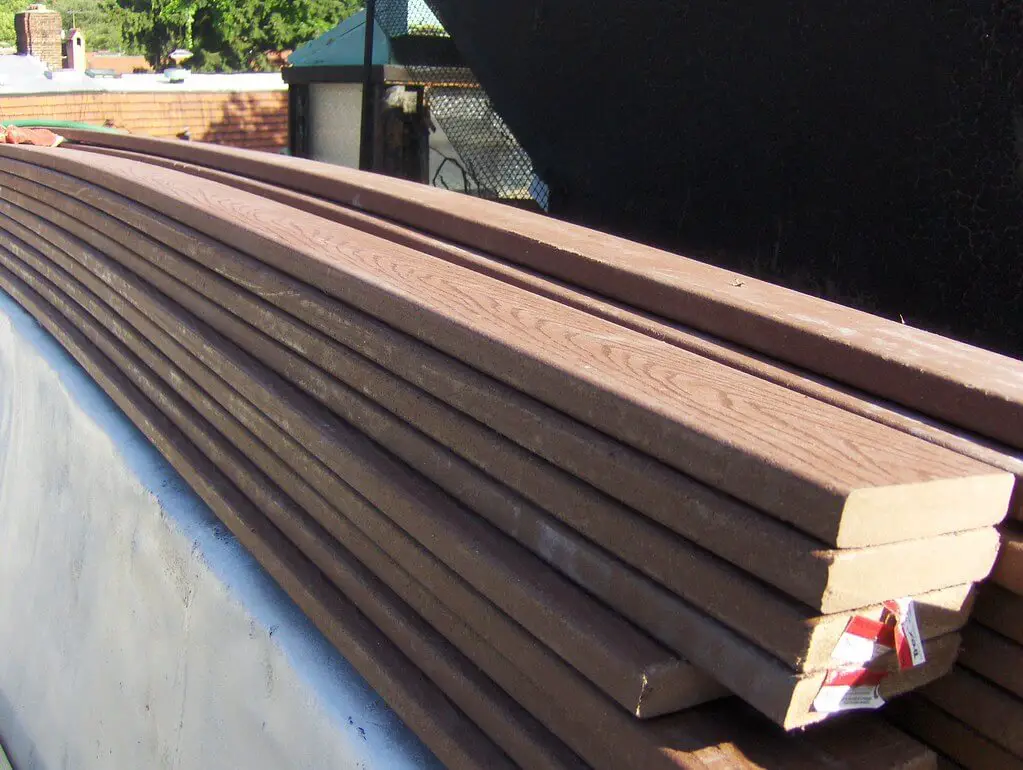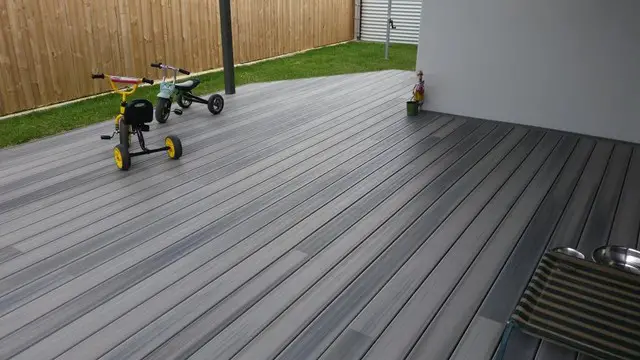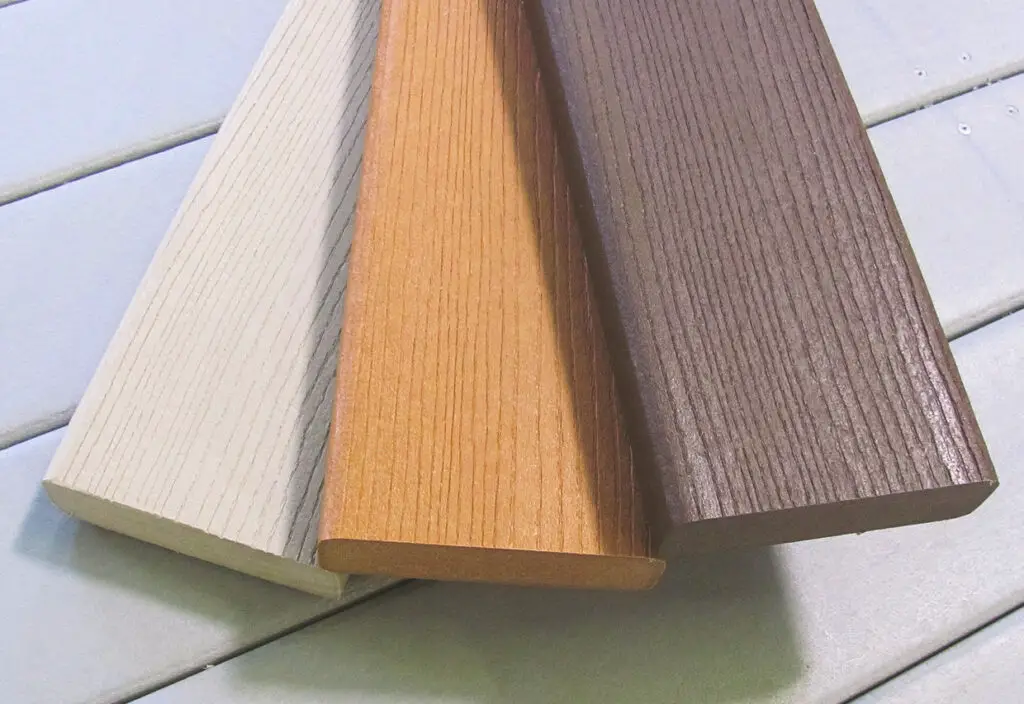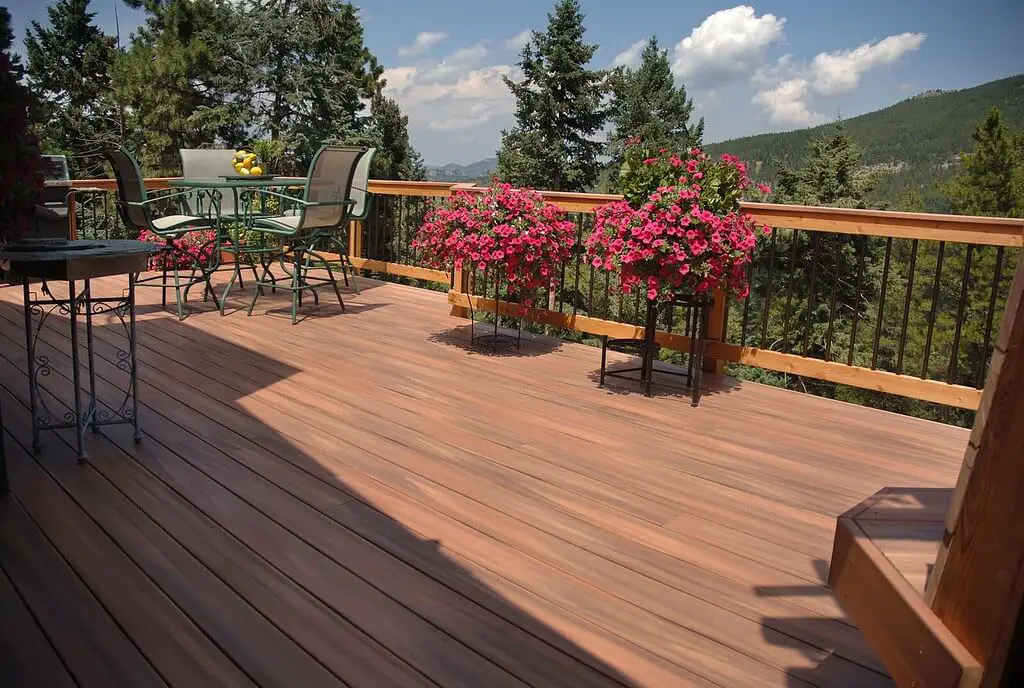Since composite decking like Trex does not decay and can be maintained with a fraction of the effort required for a wood deck, it has become a popular option for many homes. Homeowners quickly became aware that their composite deck had lost its original color due to prolonged exposure to the sun. After some consideration, they eventually started to question if composite decks could be painted.
It is possible to paint or stain most types of composite or Trex decking. If you decide to paint, we recommend latex paint with a satin or semi-gloss finish and an acrylic latex exterior primer. Select an acrylic latex stain that has mildew and UV ray protection if you do wish to stain.
If you’re interested in giving your composite deck a facelift with a new coat of paint or stain, we’ll walk you through the steps, from determining which composites are paintable to deciding between paint and stain to sanding and priming the surface. As an added bonus, we’ve included some expert advice. Let’s jump right in and start working.

What Is Trex or Composite Decking?
Most composite decking is made from a combination of wood and plastic. There are composite decks that are made from recycled materials or leftovers from the manufacturing process. As an example, Trex is made from recycled plastic and sawdust. 500 square feet of decking is said to be comparable to 140,000 plastic bags.
All composite decking is not born equal. Let’s take a moment to go through how composite decking may be made, as cleaning and painting techniques are product-specific.
Using an Extrusion Process to Make Composite Decking
Co-extruding refers to the process in which raw materials like wood and plastic are mixed and then melted into a single product. To make the timber planks, the molten material is pressed into a die. This method is used in the production of DuraLife composite decking.

Lumberock, too, is made by an extrusion method. However, their planks are mold- and mildew-proof since they are made of inorganic elements like plastic and minerals.

Using Compression-Molding to Manufacturer Composite Decking
Compression-molding, in which materials are put in a mold and heated and squeezed to make the planks, is another way of producing decking. This method is used to create Trex decking.
Solid PVC Composite Decking
All of the components of TimberTech decking are PVC. It’s yet another item that was made using the compression molding technique. The robust PVC construction of the decks makes them far more long-lasting than any other type of composite decking. When it comes to composite decking, many people agree that the AZEK product line is the best, but it also comes with a hefty price tag.
Mold, mildew, and decay are no match for composite decking, no matter the manufacturing process. Plus, unlike a hardwood deck, it is resistant to termites and other pests.
Just in Case You Were Wondering… To replace the increasingly unpopular ivory billiard balls, plastic molding was developed in the late 1800s so that makers of plastic billiard balls could begin mass production.
Can All Composite Decking Be Painted?
All composite decks are suitable for painting or staining. However, there are a few special cases that need be taken into consideration.
- TimberTech products are not intended to be painted, and doing so will void your warranty. Given that it’s composed of PVC, painting it would be pointless.
- The more costly Trex Transcend and Escapes lines are unpaintable, the company maintains.
- Lumberock claims that paints and dyes will flake and peel because they do not bond correctly to the boards.
More costly decking should not fade or chip with time, as this would defeat the purpose of the extra cost.
Should I Stain or Paint the Deck?

It’s not as black and white as deciding whether to paint or stain the deck. Stain is the way to go if you’re looking for something simple to apply. Because of its watery nature, it requires only a single coat for complete coverage and won’t pool during application.
Priming your deck is a must for painting it. The thicker consistency is great for avoiding drips and lap marks. As an added note, you may need two coats to achieve the desired coverage.
Putting in the additional effort today will provide better results in the future. Stains need to be redone every two to eight years, while a good coat of paint may stay for decades.
Additionally, paint needs less upkeep. A painted deck that has been properly sealed can be pressure washed, but stain should not be washed with high pressure. You should choose oil-based paint if you want to prevent water damage to your deck. To avoid fading from the sun, use latex paint instead.
The advantages of staining include its lower cost, its more natural appearance, and its versatility in being painted over or given a new color. Composite decks, in particular, make it hard to stain over painted surfaces.
Clean Your Deck Before Painting or Staining
Mold, mildew, and grease need to be removed from the deck before it can be painted or stained. There are a number of options for cleaning composite decks, including store-bought products and homemade solutions involving soap and water. It takes baking soda and vinegar to get rid of mold.
- Clean up the area by spraying it down with water. Avoid using pressure washers with more than 3100 psi of force.
- Put some dish soap in a bucket, and using a soft bristle brush, scrub each board with it.
- The deck needs a good hosing down. A layer of muddy water can accumulate on the surface of the composite boards, thus preventing this is crucial.
- In the absence of mold, a little bit of elbow grease will leave you with a clean deck and ready to move on. A couple of further procedures are then needed to achieve this:
- Combine equal parts vinegar and water and pour it over the mold.
- Let the vinegar and water mixture lie for around 20 minutes after you’ve sprinkled baking soda on top.
- Bristle brush scrubbing can get rid of any mold or mildew that has taken root. The next step is to give the deck another good washing.
- Do not start painting your deck until the surface is completely dry.
Which Paints or Stains Work Best?
Look for deck stains that are approved for use on composite surfaces. It is recommended to use an acrylic latex stain that contains UV blockers and a mildew inhibitor, such as zinc.
If you want to protect your deck, choose a translucent stain instead of a solid one. Film-forming stains and discolorations tend to peel off in a shorter amount of time, usually only a few months. If you want to avoid a film on the surface, choose a semi-transparent or semi-solid stain.
Painting should always begin with an external primer made of acrylic latex. For composite decks, we recommend either Rustoleum or Valspar. Choose satin or semi-gloss latex paint for floors and decks. You should opt for paints with a texturing ingredient if you require traction in a wet place, as around a pool.
A Few Helpful Painting Tips
Tips from the pros to help your project succeed:
- View the weather forecast. It will take at least two hours for the paint or stain to dry completely.
- Stay away from staining or painting boards when they’ll be exposed to direct sunlight. This is done so the coating doesn’t dry too soon.
- If you time it right, you can cover a whole board in paint while it’s still wet. In this approach, lap markings can be avoided.
- If you must stain with a brush, do it using the back-brush technique.
How Else Can a Composite Deck be Refreshed?
Make sure your deck is spotless before attempting to paint or stain it. A deck may only require a thorough washing occasionally. Avoid exceeding 3100 psi while using a pressure washer.
If you conclude that a thorough cleaning is all that is needed, then you will need to invest in a more powerful cleaning solution. One solution that Trex recommends is the Composite Deck Cleaner and Enhancer by Expert Chemical. It has a mild chlorinated mix that gets deep into the pores of the composite decking.
A deck brightener, such as Olympic Premium Deck Cleaner, seems to be another choice. Tannin and rust stains can be removed with the help of a deck brightener because of the oxalic acid included in it.
Taking into account the additional cleaning needed to revive the composite, you could probably go ahead and apply a stain if you choose this option.
Conclusion
You could paint or stain aged composite decking to make it seem like new again. If you do that, your deck will look brand new. Don’t forget that the level of effort you’re willing to put into the process will determine whether you paint or stain. While staining your deck will extend its life, it can’t be done after you’ve already painted it.
Whatever you do, don’t neglect this crucial pre-construction stage and let your deck collect dust. If you don’t, the stain will peel off since it didn’t dry correctly. If that occurs, all of your efforts would have been in vain.
Sources:
Eco-Friendly, Recycled Plastic Decking
Coextrusion by sciencedirect.com
There are options for cleaning vintage Trex composite decking
More from Materialsix.com:


